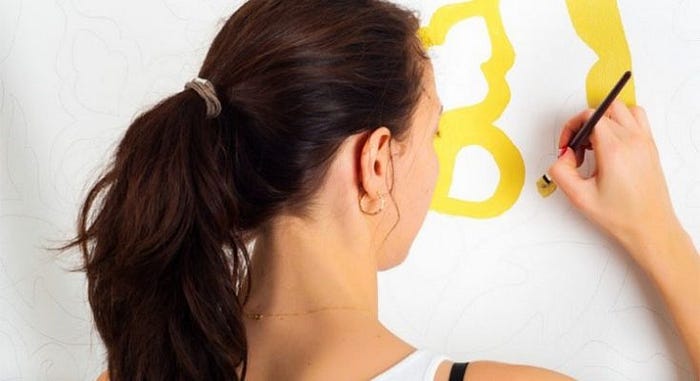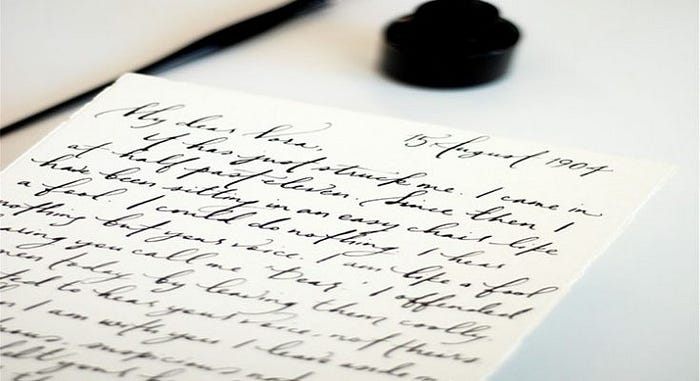Why learning handwriting is essential even in this digital age

Have you scribbled out a shopping list on the back of an envelope or stuck a Post-it on your desk in the last few days? Or, perhaps you have added a comment to your child’s report card or made a few quick notes during a meeting. But when did you last draft a long text by hand? How long ago did you write your last “proper” letter, using a pen and a sheet of writing paper? Are you among the increasing number of people, at work, who are switching completely from writing to typing?
No one can say precisely how much handwriting has declined, but surveys tell us that one in three adults had not written anything by hand in the previous six months. On an average, they had not put pen to paper in the previous 41 days. People undoubtedly write more than they suppose, but one thing is certain: with information technology we can write so fast that handwritten copy is fast disappearing in the workplace!
Given that email and texting have replaced snail mail, and that students take notes on their laptops, “cursive” writing – in which the pen is not raised between each character – has been dropped from the school syllabus in countries such as the US. Since 2013 American children have been required to learn how to use a keyboard and write in print. But they will no longer need to worry about the up and down strokes involved in “joined-up” writing, less still the ornamental loops on capitals!
Ever since writing was most likely first invented, in Mesopotamia in about 4000BC, it has been through plenty of technological upheavals. The tools and media used for writing have changed many times: from Sumerian tablets to the Phoenician alphabet of the first millennium BC; from the invention of paper in China about 1,000 years later to the first codex, with its handwritten sheets bound together to make a book; from the invention of printing in the 15th century to the appearance of ballpoint pens in the 1940s. So at first sight the battle between keyboards and pens might seem to be no more than the latest twist in a very long story, yet another new tool that we will end up getting used to. What really matters is not how we produce a text but its quality, we are often told. When we are reading, few of us wonder whether a text was written by hand or word-processed.
But we at Penkraft do not agree: pens and keyboards bring into play very different cognitive processes. Handwriting is a complex task which requires various skills – feeling the pen and paper, moving the writing implement, and directing movement by thought. Children take several years to master this precise motor exercise: you need to hold the scripting tool firmly while moving it in such a way as to leave a different mark for each letter.
Operating a keyboard is not the same at all: all you have to do is press the right key. It is easy enough for children to learn very fast, but above all the movement is exactly the same whatever the letter. Handwriting is the result of a singular movement of the body, typing is not. Drawing each letter by hand substantially improves subsequent recognition. Drawing each letter by hand improves our grasp of the alphabet because we really have a “body memory”
Do we express ourselves more freely and clearly with a pen than with a keyboard? Does it make any difference to the way the brain works? Some studies suggest this may indeed be the case. Note-taking with a pen, rather than a laptop, gives students a better grasp of the subject. A study focused on more than 300 students at Princeton and the University of California, Los Angeles suggested that students who took longhand notes were better able to answer questions on the lecture than those using a laptop. For the scientists, the reason is clear: those working on paper rephrased information as they took notes, which required them to carry out a preliminary process of summarizing and comprehension; in contrast, those working on a keyboard tended to take a lot of notes, sometimes even making a literal transcript, but avoided what is known as “desirable difficulty”.
Furthermore pens and keyboards use very different media. Obviously you can change the page layout and switch fonts on a PC or laptop, but you cannot invent a form not foreseen by the software. Paper allows much greater graphic freedom: you can write on either side, keep to set margins or not, superimpose lines or distort them. There is nothing to make you follow a set pattern. It has three dimensions too, so it can be folded, cut out, stapled or glued!
Penkraft conducts classes, course, online courses, live courses, workshops, teachers’ training & online teachers’ training in Handwriting Improvement, Calligraphy, Abacus Maths, Vedic Maths, Phonics and various Craft & Artforms — Madhubani, Mandala, Warli, Gond, Lippan Art, Kalighat, Kalamkari, Pichwai, Cheriyal, Kerala Mural, Pattachitra, Tanjore Painting, One Stroke Painting, Decoupage, Image Transfer, Resin Art, Fluid Art, Alcohol Ink Art, Pop Art, Knife Painting, Scandinavian Art, Water Colors, Coffee Painting, Pencil Shading, Resin Art Advanced etc. at pan-India locations. With our mission to inspire, educate, empower & uplift people through our endeavours, we have trained & operationally supported (and continue to support) 1500+ home-makers to become Penkraft Certified Teachers? in various disciplines.



